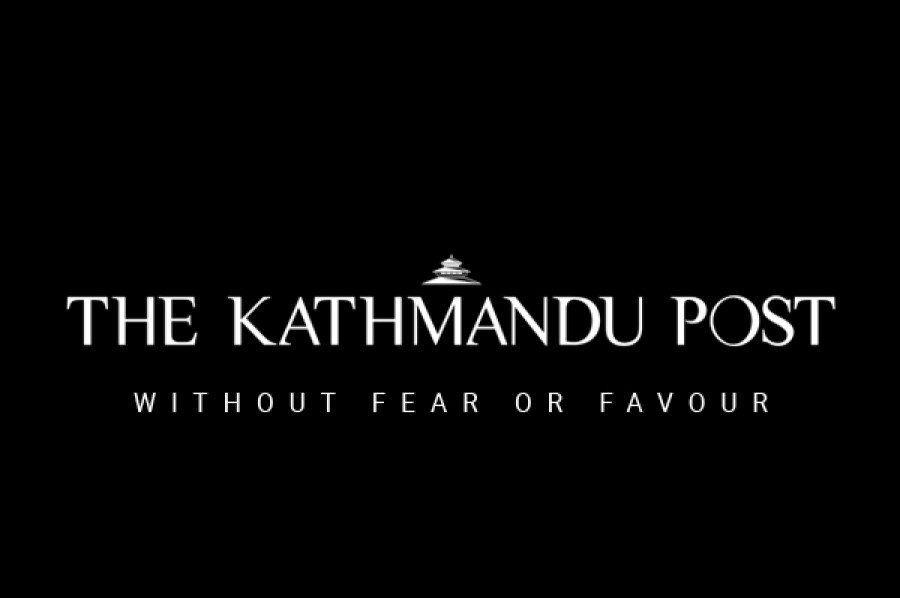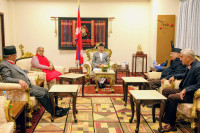Opinion
An alternative model
Ruling coalition’s seven-province model, in any form, is not decentralisation as alleged by the opposition
Kl Devkota
Issues related to the number, names, and demarcation of provinces are still being highly debated at almost all formal and informal meetings of Constituent Assembly (CA) members, committees, and stakeholders. In this regard, a joint proposal of a seven-province model was forwarded by the Nepali Congress (NC) and the CPN-UML. This has made the UCPN (Maoist) and Madhes-based parties feel politically unsecure because of their own double standards. On the one hand, they advocate for several provinces on ethnicity basis but on the other, they forward a proposal of a single province in the Tarai and several provinces in the hills and mountains. Hence, based on different facts and figures, I argue that several such provinces are not feasible. This article continues the discussion of an earlier article, ‘A federal model’, (September 24).
Unequal share
As per the 2014 Nepal Human Development Report, the highest scoring seven districts are Kathmandu, Lalitpur, Kaski, Bhaktpur, Manang, Chitwan, and Syangja. Likewise, districts that fall on the bottom of the list are Bajura, Bajhang, Kalikot, Humla, Acham, Rautahat, and Mahottari. The indices of the aforementioned report comprise of basic education, basic health, drinking water, sanitation, life expectancy, per capita income etc. This report also highlights that 40 percent of the population are devoid of safe drinking water in Dailekh, Achham, Dang, Jajarkot, Salyan, and Kalikot, among other districts. Similarly, 70 percent of households do not have a toilet in Saptari, Siraha, Rolpa, Rautahat, Sarlahi, Mahottari, and Bara, among other districts. As per various CA reports, the provincial and local government will be required to invest heavily in those human development-related sectors.
Furthermore, as per the 2013/14 Economic Survey, the composite share of customs duty, value-added tax, corporate income tax, and personal income tax in government tax revenues is 86 percent. As per CA reports, all these revenue assignments have been proposed for the central government.
The report of the Financial Comptroller General Office for the Fiscal Year 2070/71 mentions that of the total government revenue, the districts that collect the highest amount of revenue are Parsa (26.82 percent), Kathmandu (25.49 percent ), Lalitpur (17.82 percent ), Rupandehi (7.89 percent ), Morang (5.80 percent), Chitwan (2.49 percent ), Bara (1.95 percent ), Jhapa (1.77 percent), Sindhupalchowk (1.48 percent ), and Banke (1.44 percent). The share of rest of the districts is below one percent. These revenues have also been proposed for the central government.
The Local Bodies Fiscal Commission’s financial detail analysis report 2070 highlights that the internal revenue of more than 15 District Development Committees (DDCs) is below Rs 1.5 million. The names of those DDCs are Dolpa, Okhaldhunga, Kalikot, Bajhang, Baitadi, Bajura, and Humla. The report also states that more than two-thirds of DDCs are not in a position to sustain administrative expenses from their revenue.
So, despite evidential figures clearly showing that increasing the number of provinces is not economically viable, it is difficult to understand why the UCPN (Maoist) is pushing for it. On the one hand, the party has proposed fewer economic rights for provinces and local governments while on the other hand, it is arguing for more provinces without paying attention to the evidence of economic conditions, geographical and administrative difficulties, and availability and possibility of natural resources. Political parties also have yet to discuss the division of authority to the central, provincial, and local governments.
Federalism and decentralisation
The opposition, consisting of the UCPN (Maoist) and Madhes-based parties, has charged the NC and UML’s seven-province model as the continuity of decentralisation. So it is important to differentiate between federalism and decentralisation. Federalism is a political concept used to describe a system of government in which sovereignty is constitutionally divided between a central governing authority and constituent political units. Decentralisation is the devolution of powers by the central authority to lower levels. The central authority may withdraw the devolved powers at will. In contrast, in federalism, powers are constitutionally divided. This is the fundamental difference between decentralisation and federalism.
The ruling coalition’s proposal, in any form, is not a continuity of decentralisation. In contrast, the UCPN (Maoist) and Madhes-based parties have proposed several provinces on ethnicity basis, which will form resource-less and powerless provinces that are fully dependent on the central government.
Best alternative
Based on the data of the Fiscal Year 2070/71, there are only 15 districts making up to 0.5 percent contribution to the total revenue collection. Furthermore, there are 17 districts collecting Rs 1 billion to Rs 94 billion. As highlighted above, these revenue portions go to the central government. There might not be more than four provinces that are economically viable, even if revenue sources go straight to the provincial governments. These potential provinces/regions are Kathmandu Valley and surrounding districts; Jhapa, Morang, and adjoining districts; Parsa, Bara, Chitwan, and surrounding districts; and Rupandehi, Banke, and surrounding districts.
More or less, the trend of central and local revenue collections is similar. The DDCs that have higher populations and abundant natural resources are collecting a satisfactory level of revenue. Like the above division of districts into four categories according to central revenue collection, they can also be divided into seven market (district) centres according to local revenues. They are Biratnagar (Morang), Birgunj( Parsa), Kathmandu, Pokhara (Kaski ), Butwal (Rupandehi), Nepalgunj (Banke), and Dhangadi (Kailali). Potential provinces can be designed based on these criteria. While proposing provinces, economically poorer districts should be merged into stronger districts. Based on geographical structure, attraction of possible investors, and sustainability of revenues, the provinces should be designed on north-south basis.
In addition, the least-developed districts in the Tarai as per 2014 Nepal Human Development Report are Rautahat, Mahottari, Sarlahi, Siraha, and Dhanusha. These districts are also poorer in central and local revenue collection. The proposal for separate provinces from Saptari to Parsa, including these districts, from the NC and UML is completely unrealistic and not feasible, not only from human and economic perspectives but also from the administrative side. Hence, the best alternative of province determination is north-west, except for one as proposed in my earlier article.
While carving out states that stretch from north to south, there should be four in the hills/mountains and three in the Tarai (see Table 1). These provinces have been designed based on population and local taxation. Hopefully, the proposed provinces will be a win-win for both the ruling parties and the opposition.
Devkota holds a PhD in fiscal decentralisation and is a former member of the Local Bodies Fiscal Commission ([email protected])




 7.12°C Kathmandu
7.12°C Kathmandu











